I would be lying if I said I’d never had an issue with an homage piece. When I started collecting watches I thought the idea of owning a watch that was inspired by another watch was no better than a fake watch. But I’ve learned for the better (conceptually at least). I understand that a fake watch is one that attempts to deceive while an homage watch is attempting to pay tribute to an inspiration piece in a quality and/or fun way.
But even though I conceptually understand this, I still struggle. I’ve interacted with homages from microbrands and larger brands and I recognized the quality, the craftsmanship, and the care put into certain pieces. But sometimes its still hard to scrape my brain off the “Oh-well-it-looks-like-a-Rolex/Omega/Patek” thought track.
So here I am with the Squale 30 Atmos GMT Ceramica. It’s clearly inspired by the Rolex GMT Master. It’s an homage. But am I able to see past that? Are you? In true TBWS fashion I’m only going to be able to determine these answers and more by digging deep and conducting a hands-on review.
Is the Squale 30 Atmos GMT the perfect watch for someone looking to buy an “affordable Rolex” or can it actually stand on its own merit as a product exceeding the sum of its parts (and in this case, the sum of its predeceasing inspiration). Or does none of that even matter?
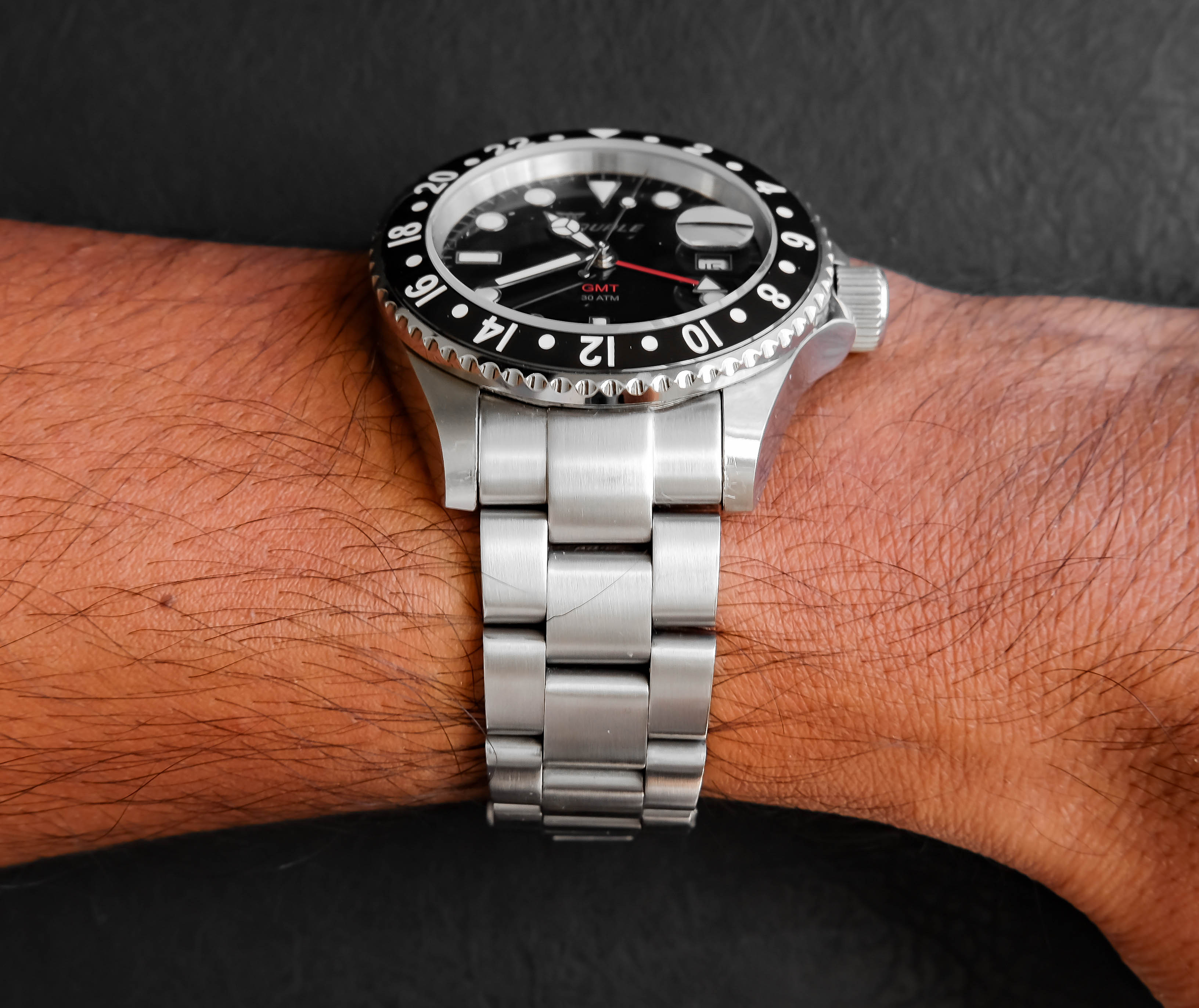
The Case
The Squale Atmos GMT measures in at 42mm in diameter, 49mm lug to lug and 13mm thick. It’s a bit deceptive in photos, but the watch tends to wear on the larger side. However it doesn’t feel bulky or cumbersome. My wrist is under 7 inches and I definitely feel like I’m in control of the wearing experience with the Squale GMT. That said, the wearability is certainly on the edge and if the case were any larger it would be a tough sell for me. While the size lends itself well to having a strong wrist presence, the actual weight of the Squale GMT’s case itself is also a factor since it’s got some heft.
The general profile of the Squale GMT 30 Atmos is inspired by the Rolex 16710 case (the reference also inspired the dial elements, which I discuss below). However there are points of deviation. The predeceasing 16710 case is 40mm where this Squale Atmos GMT case is 42 – with that in mind the larger size means that the case also has a curvature to it in order to accommodate the wearer’s wrist. The case sides are high polished while the tops of the lugs are brushed.
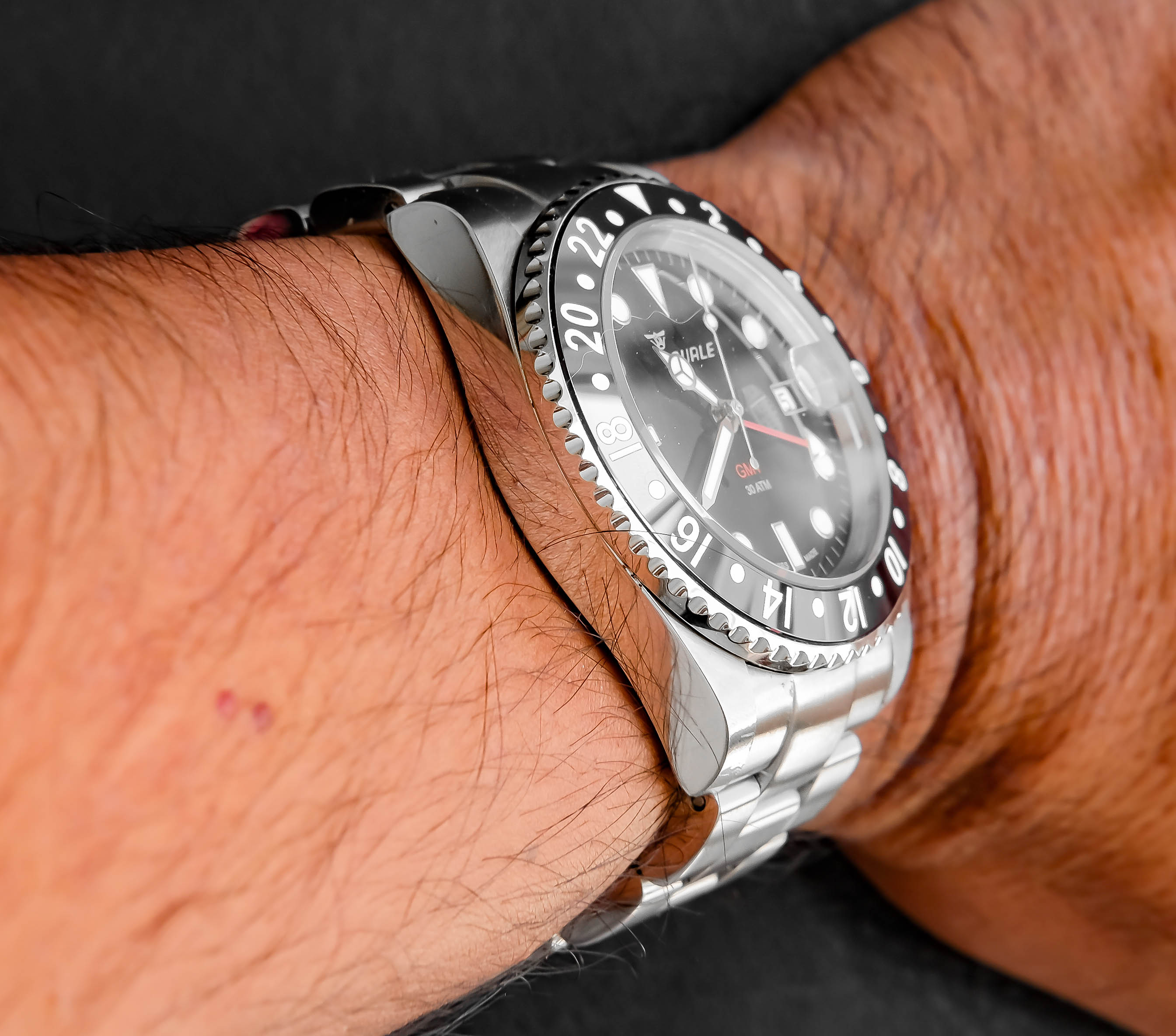
One of the more nitpicky items that I’d like to focus on with this Squale Atmos GMT review is the bezel. The 24-hour bezel itself is ceramic which in all honesty can be a huge selling point for people. I personally prefer aluminum inserts, but I can appreciate the Squale Atmos utilizing ceramic and making the traditionally high-end bezel material available in a sub $1k piece. The quality of lettering on the Atmos GMT’s bezel is appropriate for the price point in my opinion.
The characters themselves aren’t as deep as you’d see on other ceramic bezels featured on Rolex pieces, which has caused some people to flag this as an issue. To be frank, I’m 100% positive that the quality of lettering on a Rolex ceramin bezel will be miles apart from the lettering on the Squale Atmos GMT’s bezel. There is also a price difference of nearly 10x here. As such, negative criticisms of the bezel in comparison to other Rolex ceramic bezels aren’t justified. I think for the price the ceramic material makes the watch fun. I must admit that I do love the way the ceramic catches the light – it really makes the Squale Atmos pop in a way that none of my other pieces do.
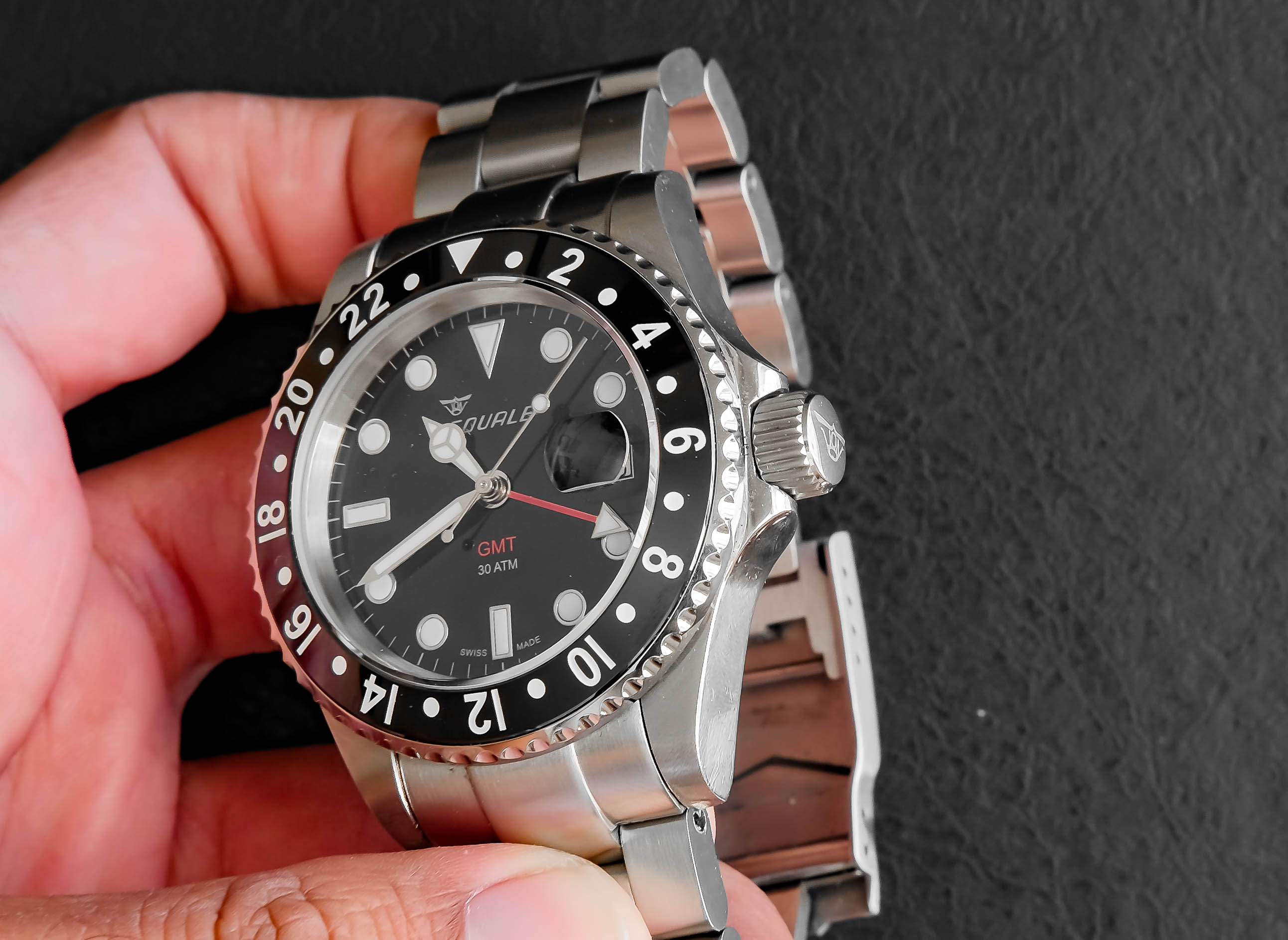
However, the bezel is also extremely difficult to turn. I have to really grip it something wicked and lean in there to get any purchase. The difficultly in bezel movement stems from (1) the angle of the bezel teeth, (2) the width of the bezel, (3) and the click mechanism. The Squale Atmos GMT’s ceramic bezel is angled in a way where one’s fingertips are inclined to slide off of it. Plus (and this really bugs me), the bezel itself doesn’t stick out far enough from the case to give you appropriate surface area to grip.
However, if you’re able to overcome the bezel angle and the lack of grippable surface area, you’re then left to contend with the difficult nature of actually getting the bezel to turn and click. It’s tough. It’s unknown to me if this is an intended feature or not – so if anyone else has experience with this on their Squale 30 Atmos please let me know.
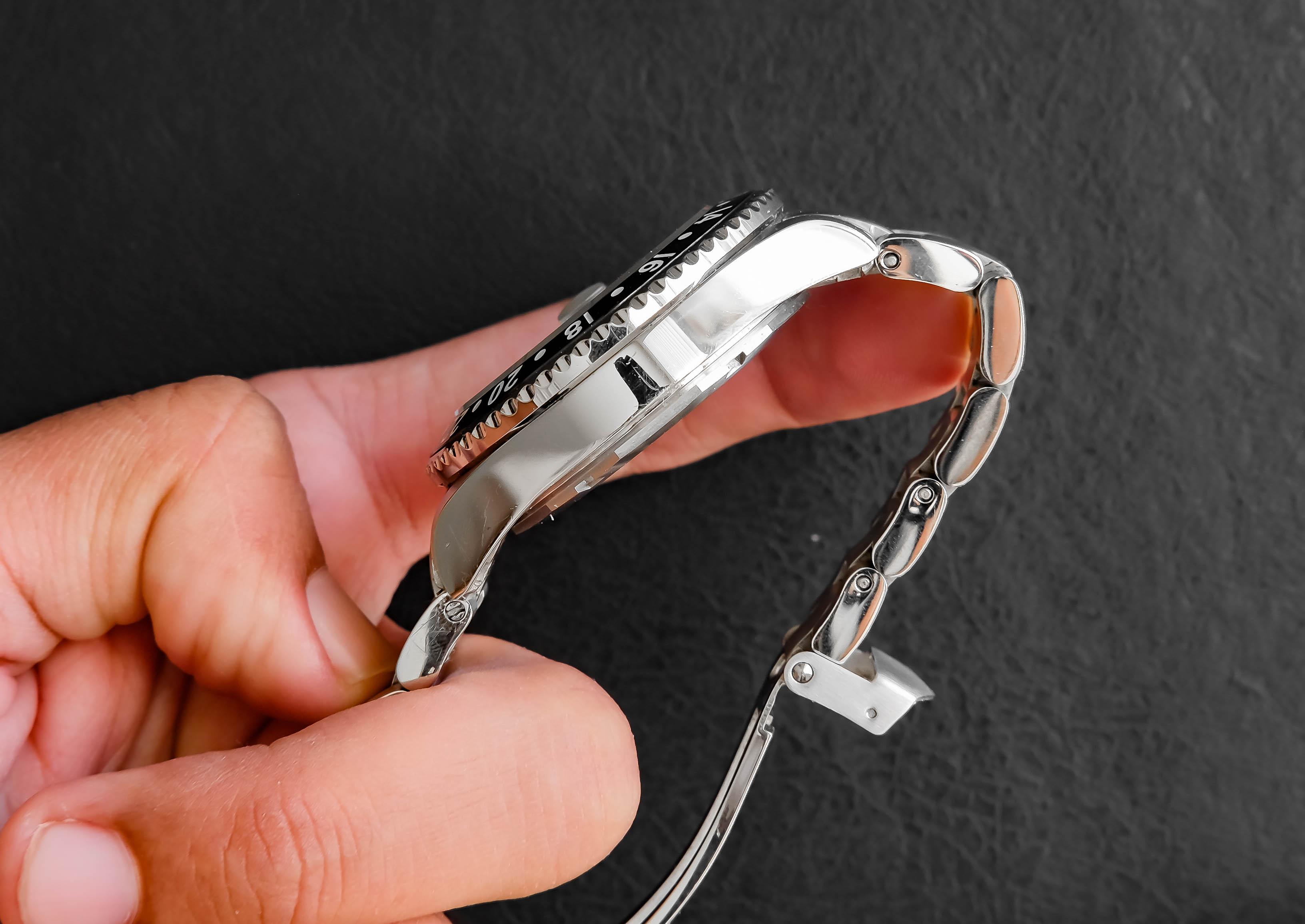
The overall quality of the actual case construction is phenomenal in my opinion. The lines and curves are incredible and the overall quality of the finish is right where it needs to be. I often just find myself admiring the case itself and running my thumbs along the sides of the polished case because the quality just feels that good. I also just want to give a huge shoutout to the Squale Atmos GMT’s crown. It’s on the larger side but it grips and turns so well. In lieu of being able to play with the bezel clicks, I just play with the crown.
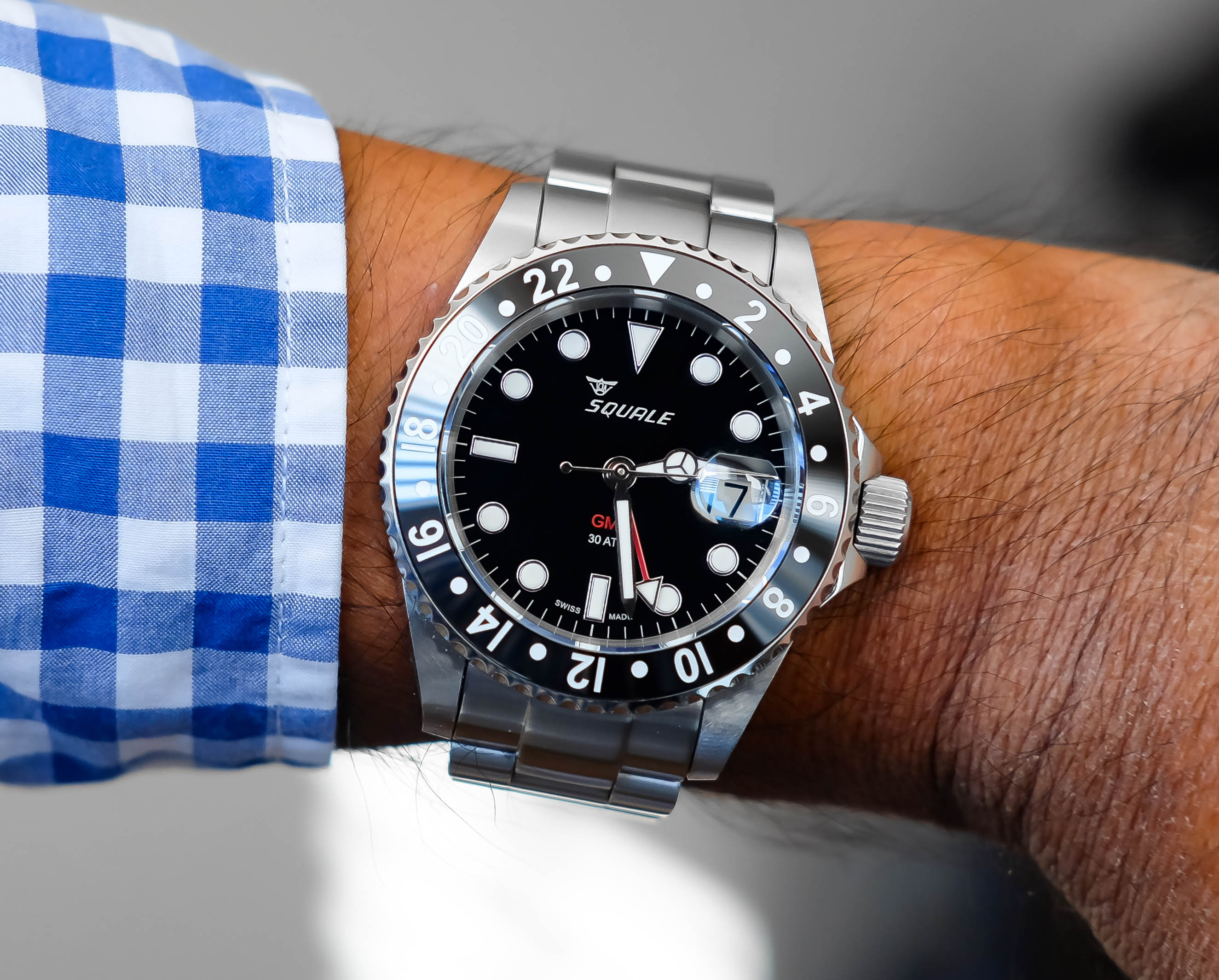
The Dial
More direct and accusatory comparisons to the Rolex 16710 are flung on the Squale Atmos GMT Classica’s dial elements. Stylistically the minute hand, second hand, hour hand, and GMT hand are the same – as are the applied markers; they’re a mixture of circles, bars, and a triangle at 12. All of those elements I just mentioned are lumed with SuperLuminova.
The dial text is minimal compared to the 16710 – the Squale logo is in silver pigment (as opposed to being in stark white) while the 6 o’clock text features “GMT” in red and “30 ATM” in the same silver pigment as the logo. The hands and applied markers are wrapped in a thin, high polished material that shines with clarity.
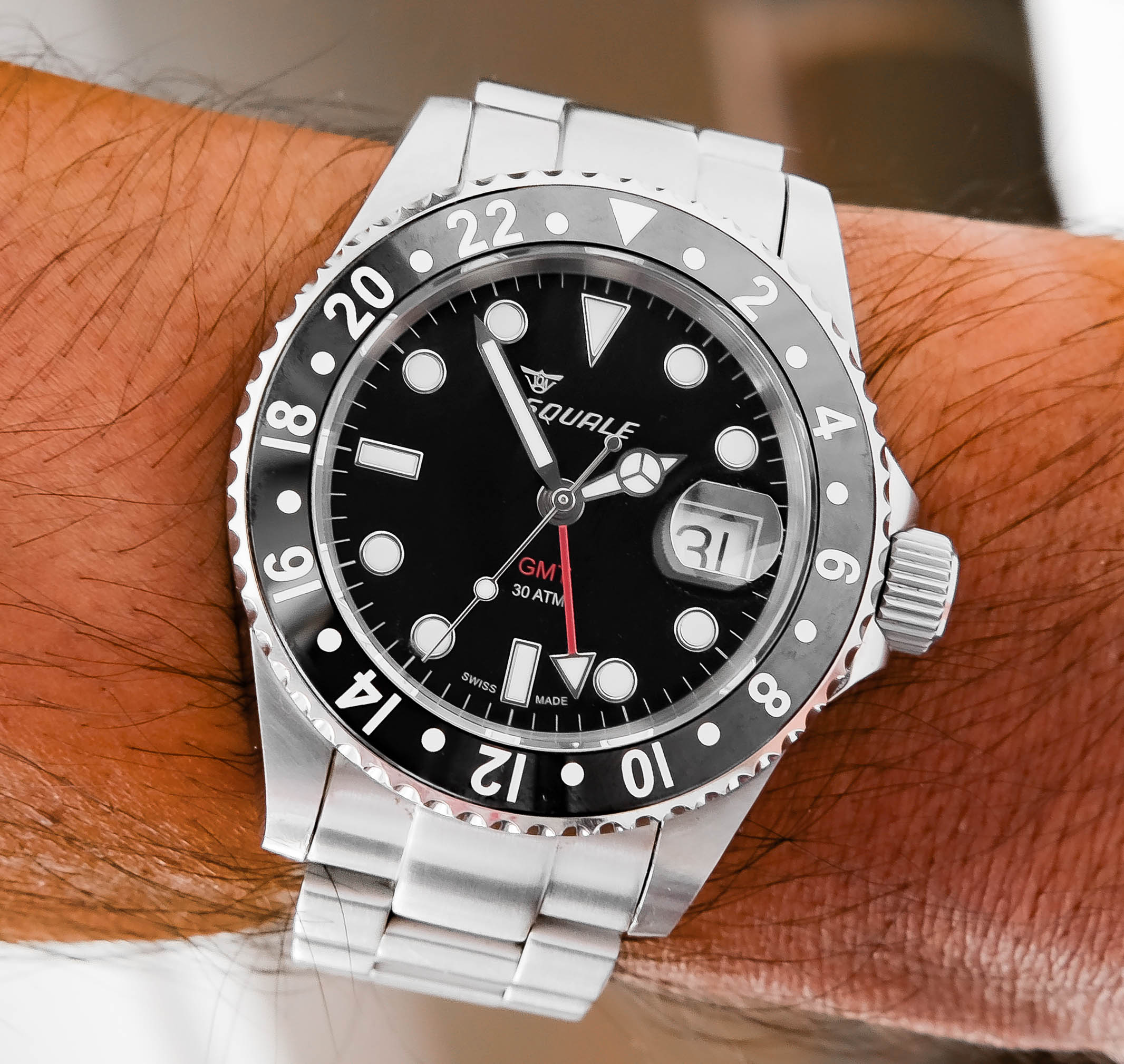
Even though the dial isn’t an original design, I’m totally floored at the level of executed quality. Any brand can use the 16710 design as an inspiration and have it come out like garbage. It’s not the intrinsic nature of the design that expresses quality (or classic taste) – it’s the level of care and finesse you utilize in expressing that design.
The sapphire crystal makes the Squale 30 Atmos GMT feel solid as hell. I even like the cyclops, which I thought was superfluous when I first heard about them. But now that I’ve tried one in person, I’m a believer. But I wouldn’t want it on every watch – I’m just saying I like the cyclops here on the Squale 30 Atmos. However there are a couple issues with the crystal. Though it is nice to have sapphire, I’ve noticed that sapphire crystals often don’t allow the dial’s lume to charge efficiently via sunlight.
I have no idea if I’m the only one that’s experienced this, but it’s something I’ve noticed with every sapphire crystal I’ve interacted with (beyond the Squale 30 Atmos GMT). It’s why I tend to prefer mineral or acrylic on my watches. My armchair horologists’ opinion is that it’s possible the sapphire crystal material inhibits UV rays from properly penetrating its surface to charge the lume. But who knows – if anyone has insight on that I’d love to hear it. The other issue is that the Squale GMT’s crystal is prone to giving off blue tones if it even gets a little smudgy or dirty.
It may be some sort of reaction between the smudge and the interior AR coating, but it’s enough to drive me mad enough to keep cleaning the crystal of my watch like a crazy person.
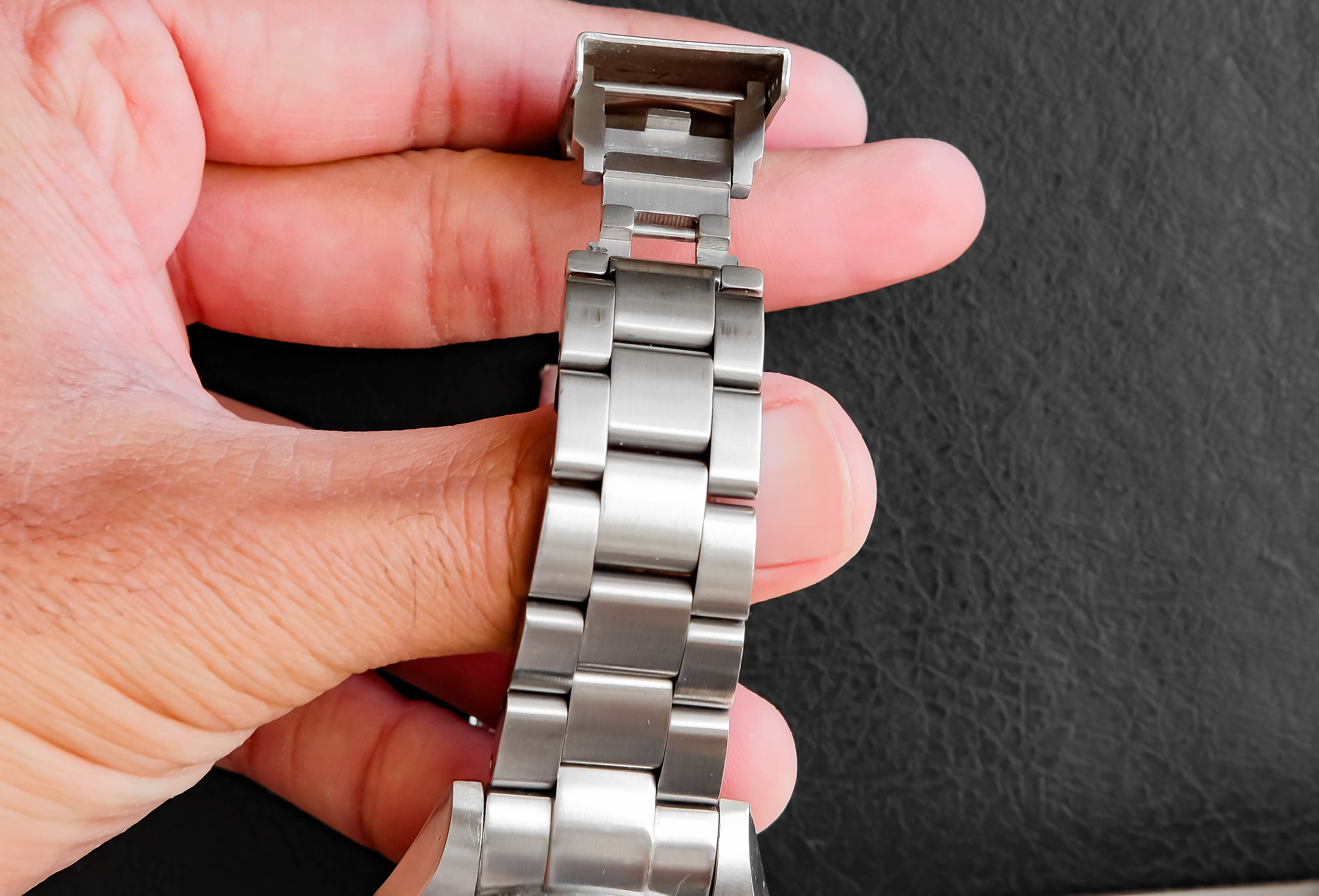
The Bracelet
Oddly enough I feel like I don’t see enough praise for the Squale 30 Atmos GMT’s bracelet – it’s an unsung hero. It’s a classic oyster link style bracelet, but the links themselves are beefy and feel substantial (in a really good way!). When you handle the bracelet you get the sense you’re handling something tough as hell with a finessed finish. When you combine the bracelet with the case the whole package results in a very confident wearing experience.
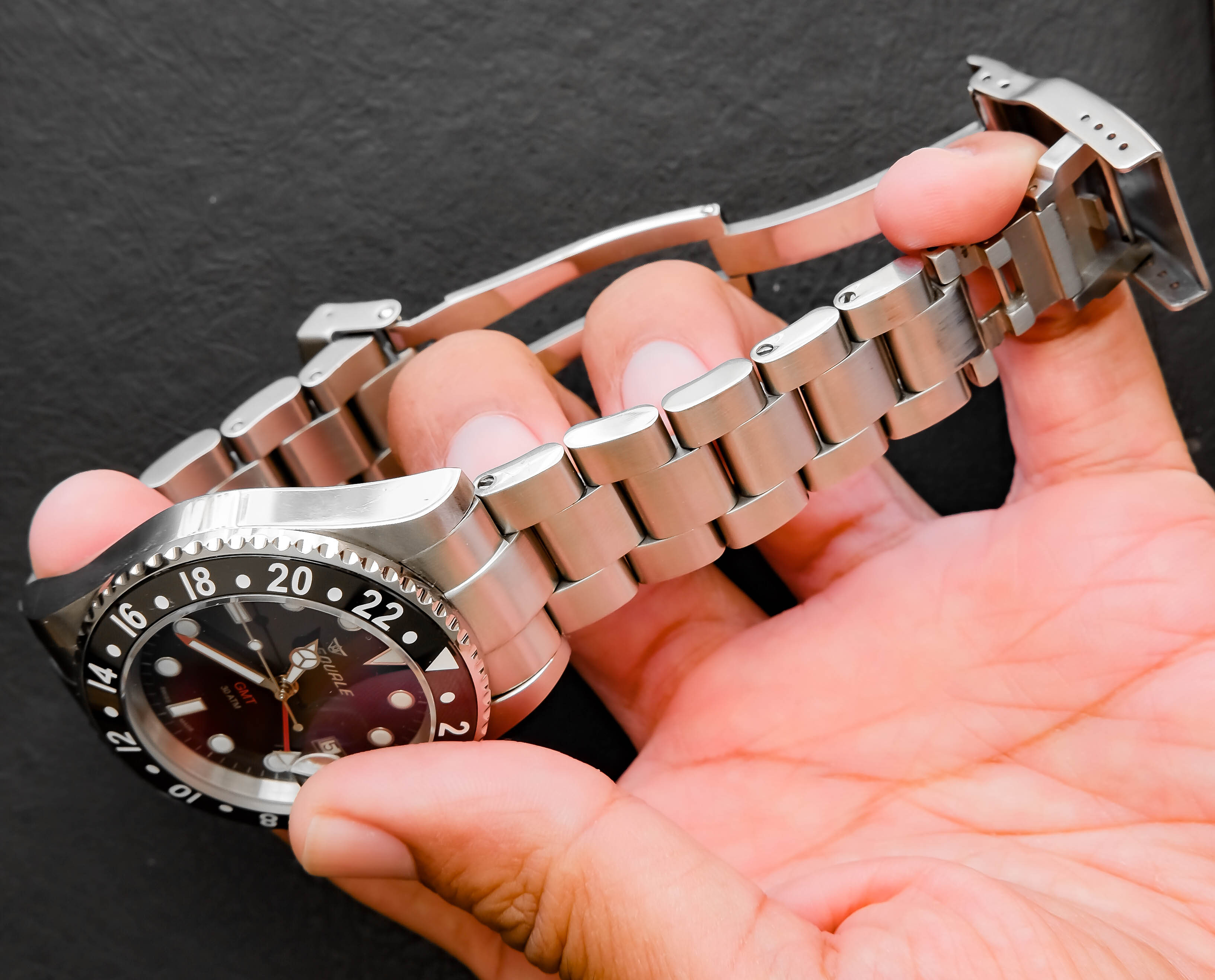
The Squale 30 Atmos GMT’s bracelet features a matte brushed finished on the top of the links (to match the finish on the tops of the case lugs) while the sides of the bracelet are high polished (to match the sides of the case). It’s a very simple but clean and effective design choice that lends itself well to the overall profile of the watch. The links are screw links, which is such a convenient feature to have – it makes sizing the bracelet a breeze.
However, if you attempt to remove the bracelet to maybe throw the piece on a NATO or something else, you’re in for a world of hurt. There are no drilled lugs, so you’re forced to attempt to remove the bracelet by engaging the spring bars from the back of the watch by getting a tool in there and waggling it about. It’s about as futile an effort as trying to yell underwater.
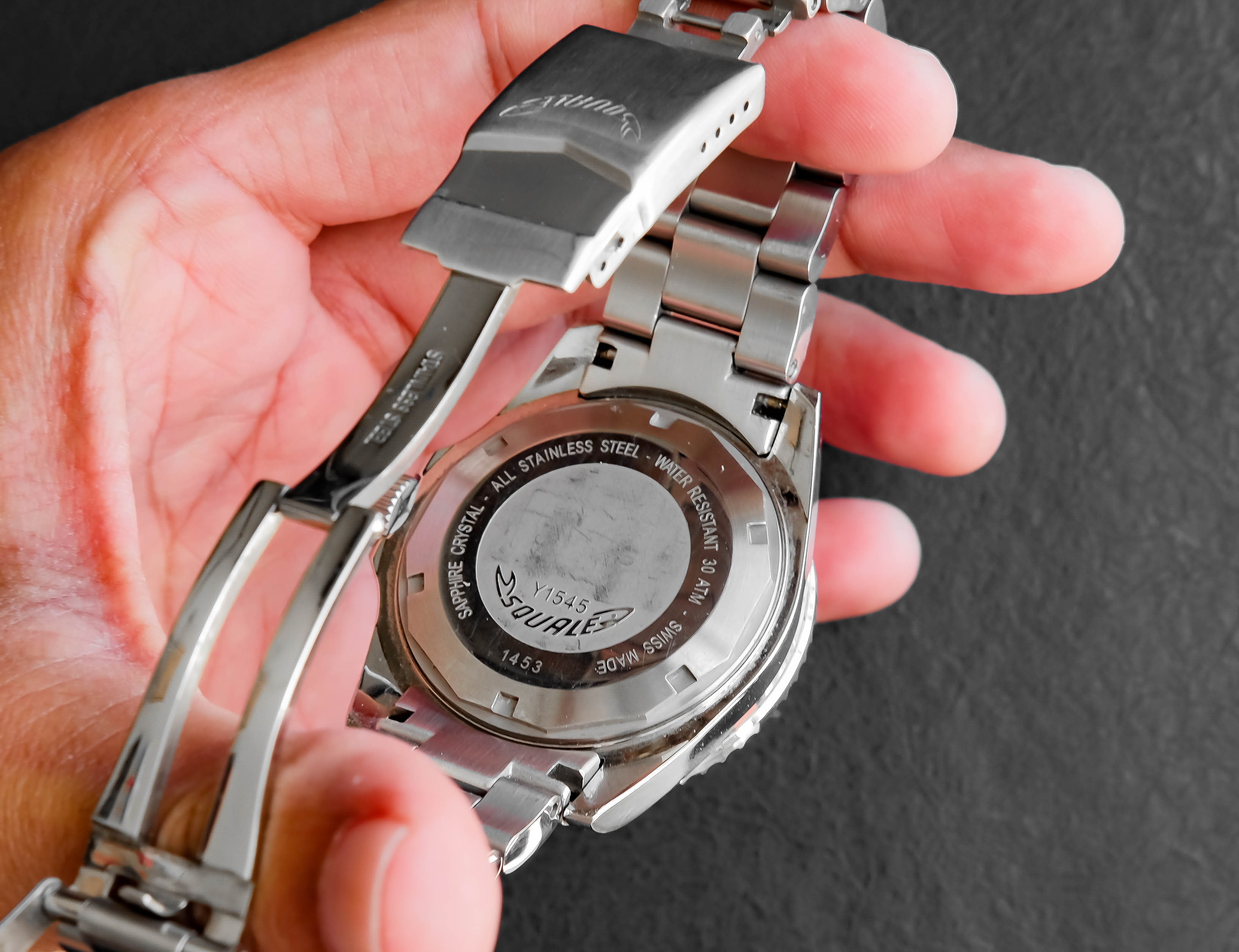
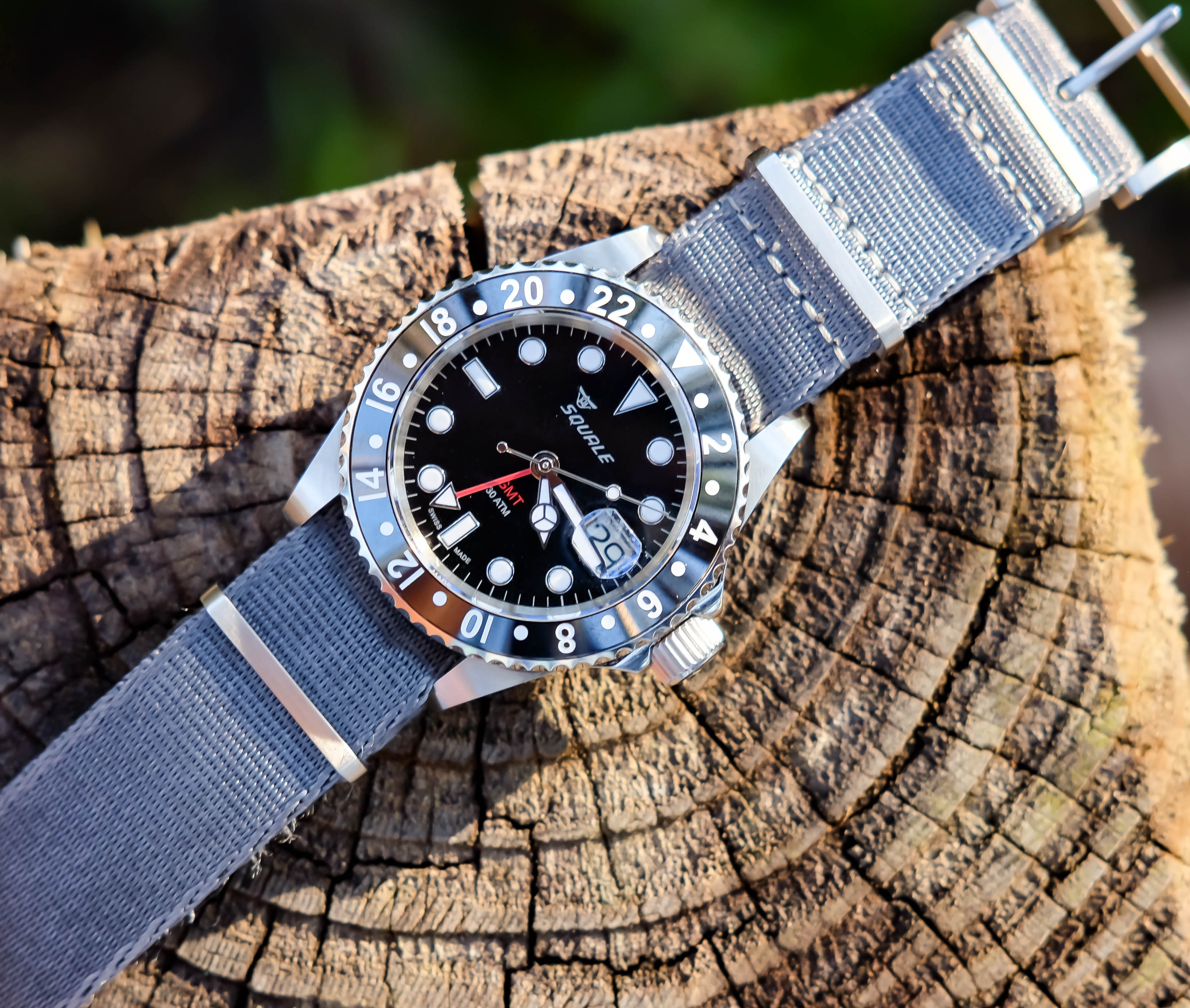
The Squale Atmos GMT’s solid end links are so deep that accurately placing the spring bar tool in the right spot isn’t going to be easy. I fought tooth and nail to get the bracelet off mine. But here’s the kicker, once I got the bracelet off and tried the Squale GMT on a NATO, I couldn’t wait to get it back on the bracelet. The watch just doesn’t feel right on anything except the bracelet it comes with. For me the two are a packaged deal. So even though getting the bracelet off is harder than hell, I don’t anticipate trying any other strap combos regardless.
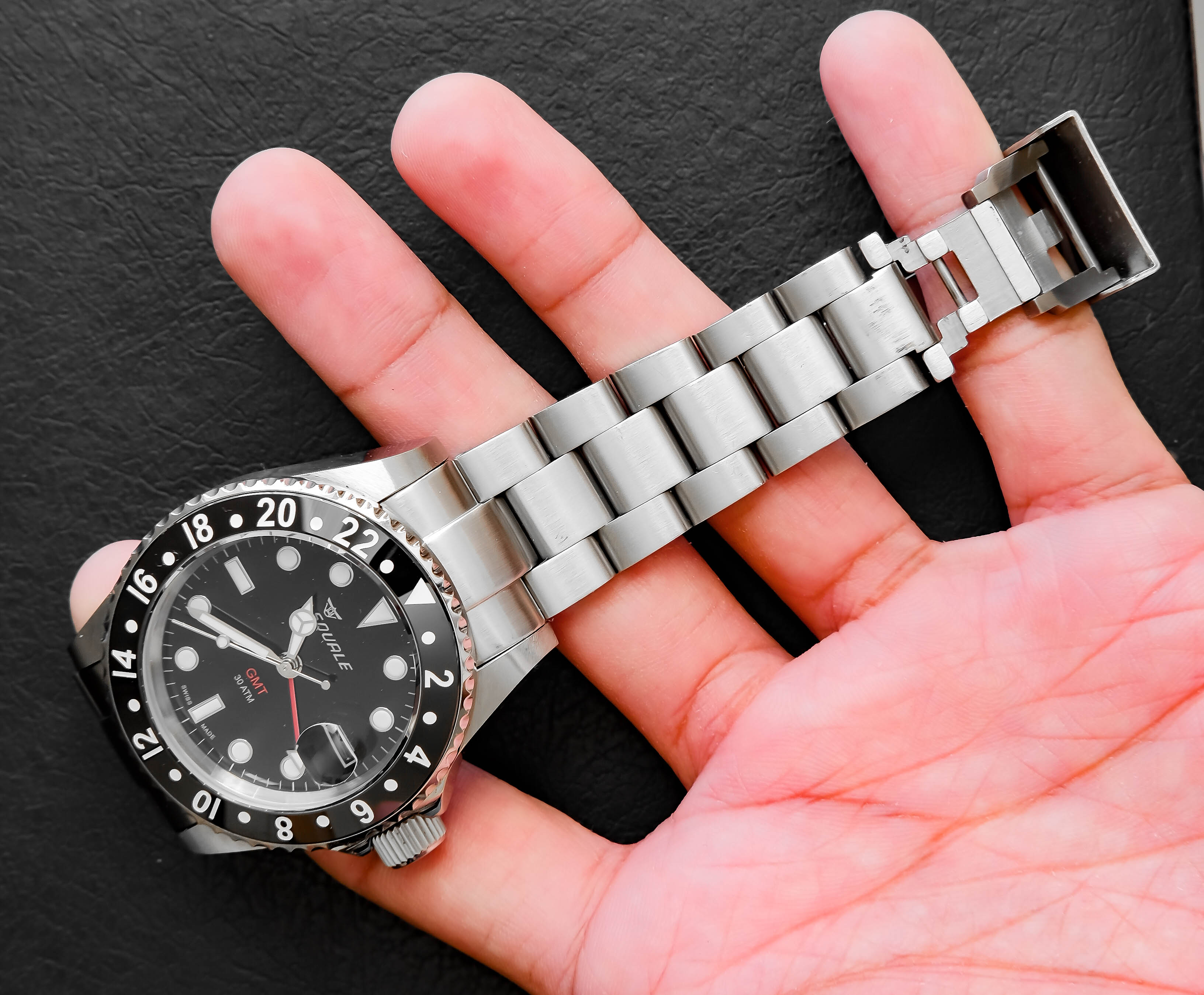
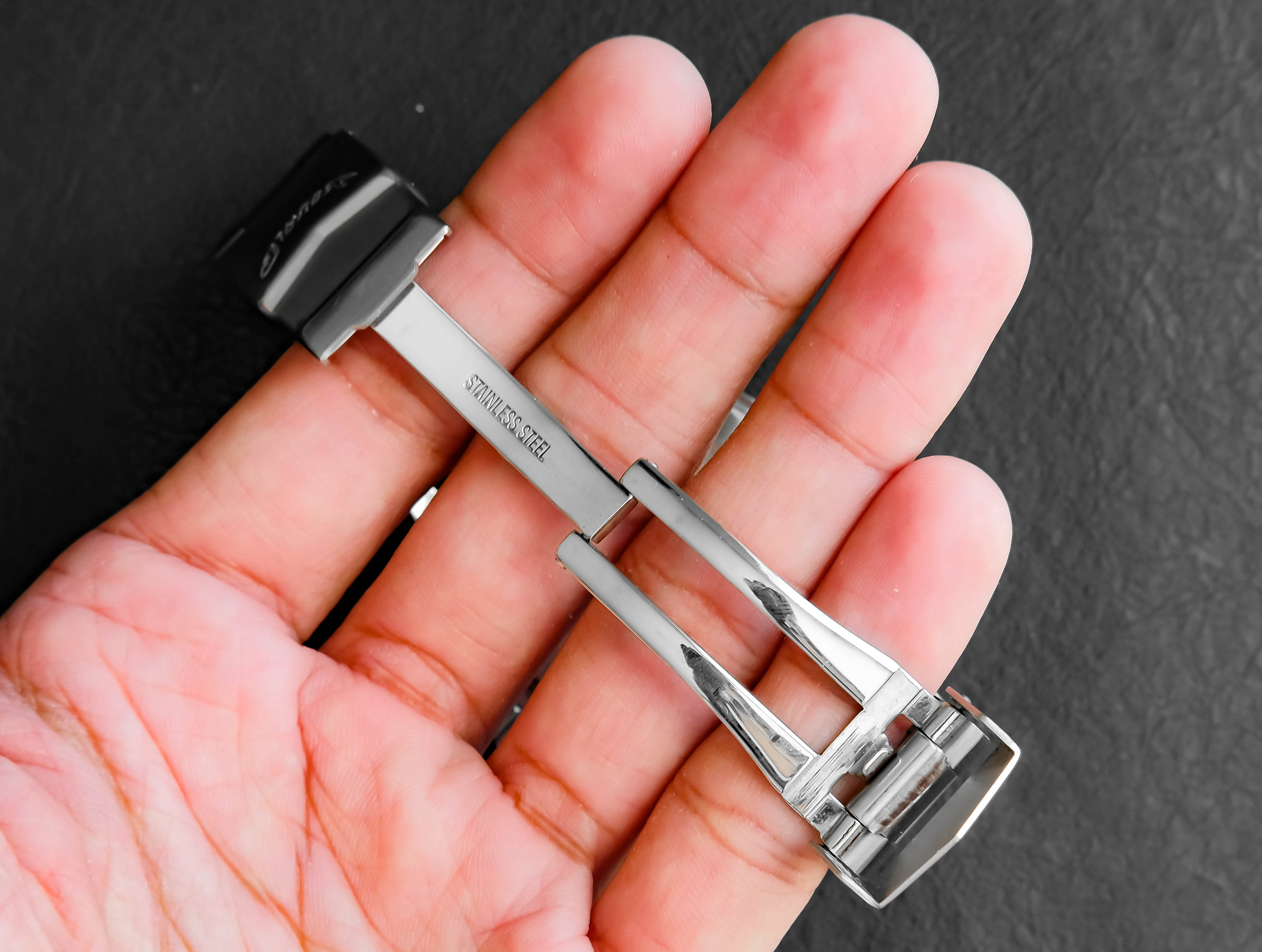
The other factor in me just choosing to keep the Squale bracelet is 21mm at the lugs. An irregular size that’s hard to find straps for. The 21mm bracelet tapers to approx. 18mm at the clasp. The entire exterior of the clasp is brushed while the interior folding mechanism is polished. There are also micro-adjustment and a diver’s extension that’s very fun to fidget with. Quality of the Squale GMT’s clasp is very strong and I can see it holding up and not crapping out anytime soon.
The Movement
Powered by the ETA 2893-2 automatic movement, the Squale 30 Atmos GMT offers wearers the choice of utilizing an independent GMT hand. This allows you to adjust the GMT hand to track a second timezone. I’ve been very impressed thus far during my time with the movement. The winding is smooth and at 28,800 beats the second hand sweeps very smoothly. The movement also hand winds which I enjoy since (as mentioned above) the Squale GMT’s crown lends itself so well to being used. It’s large but doesn’t crowd the design or wearing experience.
The one downside of the ETA 2893-2 in this Squale GMT is the power reserve. I saw on paper that the power reserve was 38 hours on a full wind and I didn’t register it as an issue. However in practice it has been sometimes annoying to not wear the watch for a day and a half and have the power reserve run out. A minor inconvenience though truth be told, but when 40+ power reserve charges are becoming the norm, the 38 is something that did catch my attention.
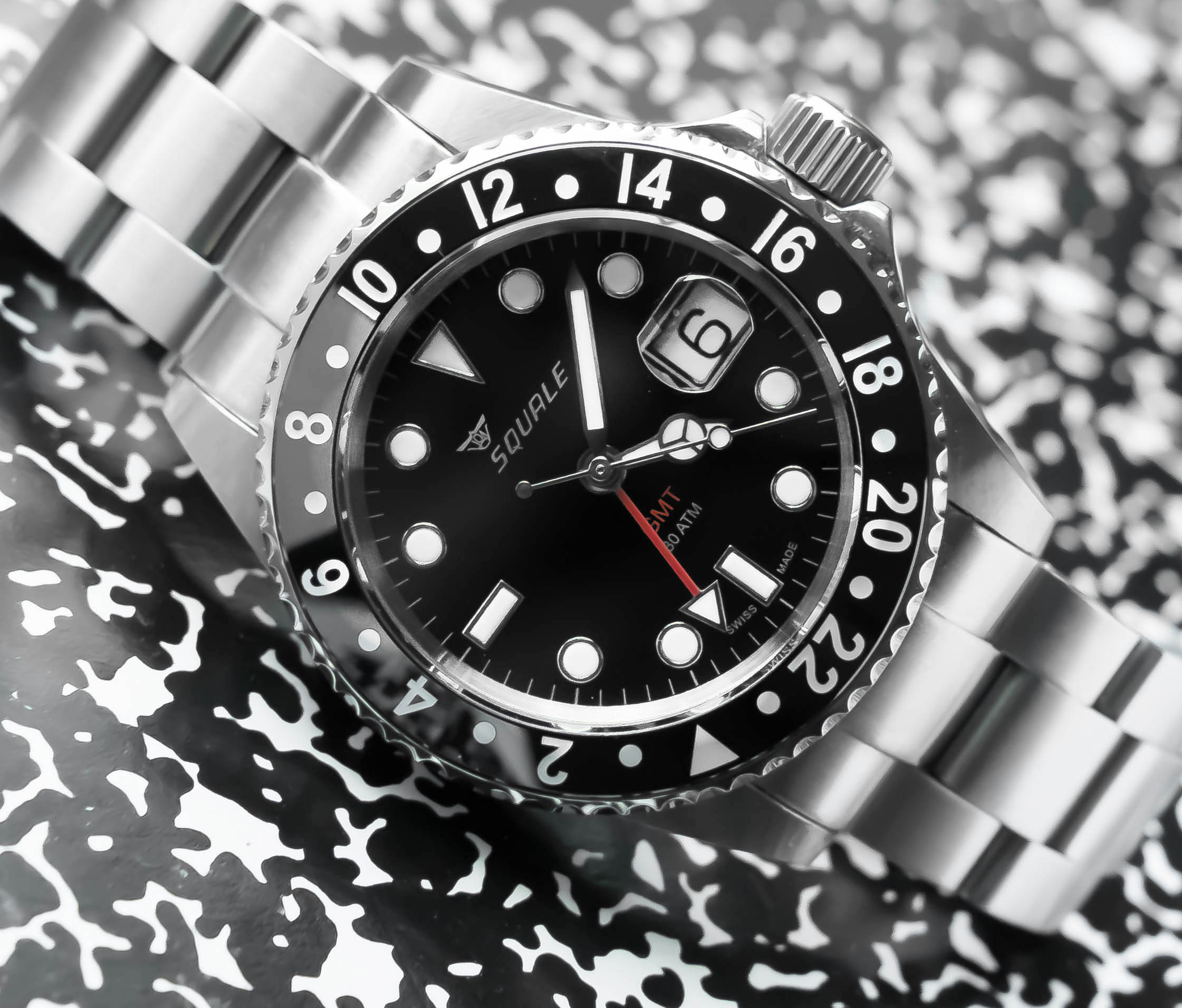
Final Thoughts
As I was writing this review I had a revelation. It’s so human and typical of many watch collectors to not be able to see a watch past its design. I understand that’s a silly thing to say because the majority of modern horology is a practice in product design. However, the Squale Atmos GMT showed me otherwise.
Squale didn’t choose the Rolex 16710 because it wanted something that looked like a Rolex. The Squale 30 Atmos GMT isn’t about looks at all. The watch is Squale’s expression of quality. It’s the brand flexing their manufacturing muscles so-to-speak.
The Squale Atmos GMT chose the Rolex as its vessel for expressing product quality. It’s not about reimagining or reinventing the wheel with a watch like this. It’s about opting for quality over design. I say that as someone that has sometimes opted to value design over quality. But my time with the Squale has shown me the other side of the coin.
It’s like how body builders use classic and established poses when they’re in show. When someone does a vacuum pose they aren’t trying to fool you into thinking they’re Arnold Schwarzenegger. They’re using that pose as a means of expressing their physique and the hard work they’ve done. In my opinion its the same thing with a good homage. Quality over originality. But it’s up to you to decide if that’s a bad thing or not. For me I’m now more proud than ever to have this piece in my collection.
This version of the Squale 30 Atmos GMT isn’t available anymore (or at least I haven’t found it online), however you can find them second hand on eBay or watch forums. Plus, there are many different versions of the Squale 30 Atmos now like the Alpine Green and Vintage Ceramic Colorways. Usually newer 30 Atmos Models will go for around $750, but if you can find them second hand on eBay you can save a lot of money.
Please let me know if you have any questions about this Squale GMT in the comments below!

Co-Founder and Senior Editor
Kaz has been collecting watches since 2015, but he’s been fascinated by product design, the Collector’s psychology, and brand marketing his whole life. While sharing the same strong fondness for all things horologically-affordable as Mike (his TBWS partner in crime), Kaz’s collection niche is also focused on vintage Soviet watches as well as watches that feature a unique, but well-designed quirk or visual hook.

Hey Kaz. Love the site & podcast. You mofos have me cracking up plus I learn about watches. I’m stuck between the ocean 39 and the 30 atmos tropic. Thing is I have skinny wrist 6.25″. Think the squale is to big in your opinion? Thanks!
Hi, Mario!
Super happy you’re enjoying the show and the site – means a lot! Hm – to be honest at 6.25″ this Squale GMT would be tough. I’d recommend the 39 since you’ll probably be much more happy with the size. At like 6.75″, the Squale GMT was right at the edge of wearability for me.
-Kaz
Hi Kaz,
Great review. Do you know if the Alpine Green GMT that you mentioned is a new release? I haven’t seen it anywhere and it’s not even on their website (it is on Gnomon watches, though).
Any insights? Thanks!
Question:
This Squale or – a Jack Mason Strat o timer; a Tissot Seastar; or a C Ward Sealander – what’s your pick for the best build quality?